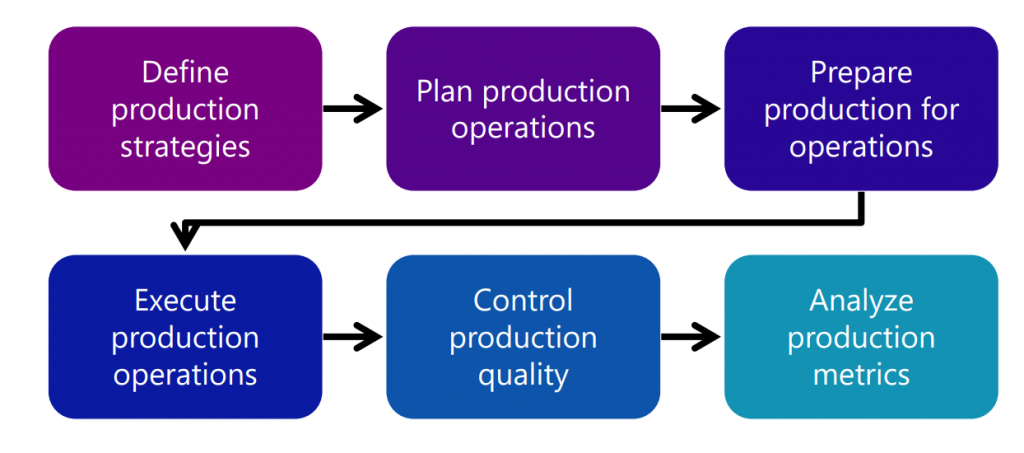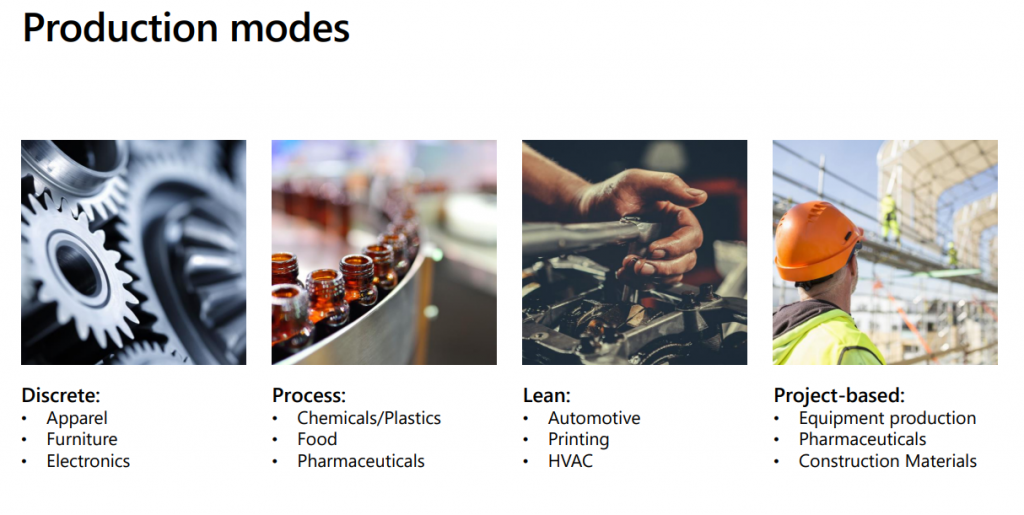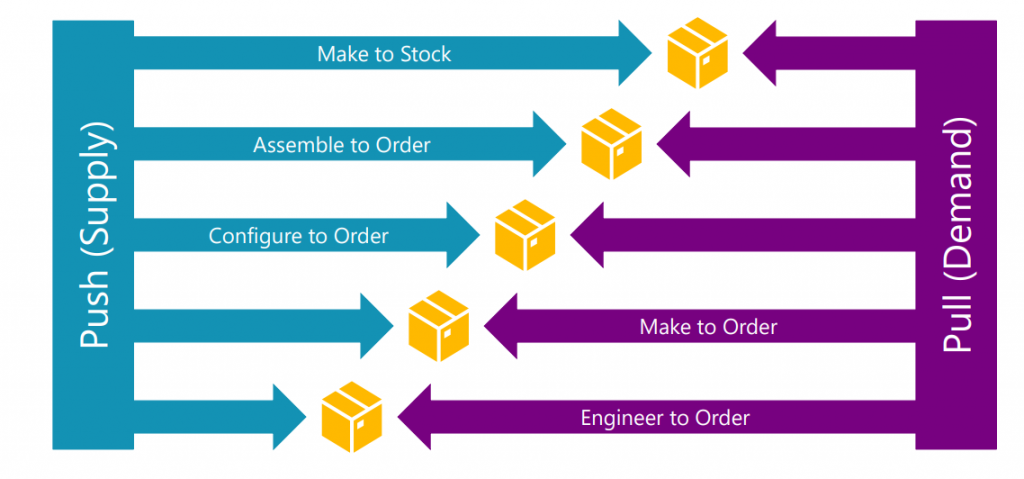Embarking on a journey through the fascinating world of production, we first need to understand its essence. Picture production as the art of transforming resources, like materials, labor, and machinery, into valuable output. It’s often synonymous with manufacturing or fabrication, but we’ll stick to “production” for its all-encompassing nature.
Key Concepts to Master
At the heart of the production, there are several key concepts that we going to touch on. The first concept is a Finished Good. This is a term used to refer to an item that we have completed in the production process and is ready to be sold to a customer.
Next, we have Sub Supplies which are also often referred to as Sub Assembly or Semi-Finished Goods. This refers to an item that’s undergone some production steps, but will then be used as a component to make a finished good.
Next, we have Raw Materials. Raw Materials are the inputs to the production process which will be used to create sub-assemblies and the finished goods. In specific industries, It is often referred to as components, ingredients, or bulk materials.
The next concept is Scrap. This is excess or unusable material, sub-assembly, or finished goods that might be thrown away, reused, or reworked during the production process. You may also call it waste byproducts or remnants.
The next big concept is our Production Schedule. This refers to our detailed plan of what products we are going to do in a certain time period. It helps us coordinate our planning and sourcing efforts and communicate delivery dates to customers.
Finally, the next general concept is Subcontracting – which is also known as outsourcing or tolling. This is the process of using a vendor to help do some or all of the production process of a particular item.

Plan to Produce Process
Of course, the detailed execution of this business process is going to be different depending on your business model, but we group the activities into some high-level process steps.
The first thing a business does is define its production strategies. This might include different modes of production you are going to use and the strategies themselves, what materials you will need for production, what steps you are going to go through, the capacity of your production facilities, and so on. All of these will have to do with the foundations that we are going to run our production process on.
Once we have our foundation built, we start looking at planning our production operations. This would include generating a demand forecast, looking at our supply schedule, generating our production schedule, planning our labor, and things like that.
Once we have a firm’s schedule we are getting ready to get started on, we need to communicate that plan to the shop floor. That might include printing production documents, moving material around our warehouse, or checking equipment to make sure it is ready for production.
Once we are ready to make our product, we will execute the production process, which may include tracking the consumption of materials, and labor; looking at our finished products, and so on.
Another key part of the production process is to control production quality. While this is shown as a step in a linear diagram, many companies actually have ongoing quality activities that are done throughout the entire process.
You might look at trends in product defects – both for finished goods and raw materials. Look at your scrap rates or material yield vendor compliance and your quality process may even include generating quality documentation to send your customer.
And of course, we also need to evaluate our production process. We do that by defining and measuring our production metrics. This might be throughput tracking, analyzing your production costs and variances, looking over overall equipment effectiveness or just measuring any other key indicators that are relevant to your business’s process.

Production Modes
When we talk about production and how it looks for different companies and different industries, there are four high-level categories that we use to refer to the different modes of production that are supported in Dynamics. These are discrete process, lien, and project-based.
Discreet refers to production that normally results in distinct items. Think of products that are tracked in units of each box, roles, etc. Some industries that commonly use discrete manufacturing include apparel, furniture, and the electronics industry.
The second mode of production that we support in Dynamics is process manufacturing, which is also commonly known as continuous or batch manufacturing or production. This type of production is typically used when our production flow results in items tracked by volume or weight, or when our process might have multiple outputs (which we refer to as co-products and by-products). Common industries that use process manufacturing are chemical and plastics, food and beverage, and pharmaceuticals or life sciences.

Next, we have lean production, which is less about the specific kind of item you produce and more about the methodology of your item. Lean is an industry-standard set of practices which are designed to maximize productivity and minimize the waste in your production process. It is often used in repetitive productive processes and it is really focused on identifying the value of your process. It originated in the automotive industry and is also commonly used in printing and HVAC.
And fourthly, we have what we call project-based production. It might also be referred to as a job shop in factoring. This mode of production is used when the item or product that’s being made is either custom takes a long time or has a large number of steps that are part of the production process. It also allows us to have a more granular billing schedule with the customer based on milestones or time passing. It is commonly used in equipment or machinery production, drug development and manufacturing, and construction. Projects are also often used by manufacturers to track R&D, research and development, and trial runs of new products.
Businesses are not restricted to operating with a single mode of manufacturing.
Production Strategies
In addition to having different modes of production, there are also several different strategies that manufacturers use to determine the execution of their production processes as they relate to the relationship between supply and demand.

The idea of choosing a production strategy is to figure out what the right balance between push and pull is. In other words, how much of the production process do you plan to do before you actually receive a customer order?
First, we have to Make to Stock. The idea of this strategy is that you will have finished products on hand at the time customer orders are placed. This strategy is often used in industries that have a low mix of items with high demand volumes; industries with short customer lead time tolerances or businesses that want to maximize production efficiency by planning further in advance.
Next, we have Assembled to Order. In this strategy, we are incorporating a little bit more pull by having the components of the finished goods ready to be assembled at the time of the customer order. This is more effective than make-to-order for companies that have a higher mix of items, which may share some components, which allows them to be more flexible with their materials versus storing fully assembled items. But it still allows them to maintain a reduced customer fulfillment lead time.
Moving closer to the middle we have Configure to Order. This is a strategy that’s used when your product offering has a standard scope with specific customizations that are determined at the time that the customer is placing an order. For example, think of a laptop where you will pick the color, memory storage, and processor chip. It is not as cost-effective to have all possible configurations of each laptop on hand, so instead the business might decide to stock the various components and subassemblies and then configure them based on each order’s customizations.
Now, venturing over into the heavier pole strategies, we have to Make to Order. In this strategy, the production of an item is deferred until a customer is placed. This allows the business to minimize their inventory on hand of finished goods but is only possible in scenarios where that longer fulfillment lead time would be acceptable. This is more common in industries that might have a higher mix of products they offer that have respective demands that are lower or industries where components have a limited shelf life such as food and beverage.
And, the last strategy is Engineer to Order. This is the most Pull (and not Push at all). In this case, the general scope of the items that we offer is defined, but the actual design is only finished at the time the customer order is placed. This is a very common strategy in industries that require the ability to have custom solutions, such as building, construction, or bespoke machinery.
As a final note, these are not the only strategies that are used in production but are some of the most common and you will find that most of the time businesses incorporate multiple strategies into their production process, whether it is for different items that they offer or different components of the same item.
Connection to Other Processes
While Plan to Produce is the business process that encompasses the steps of actual production, it also ties into pretty much all of the other standard business processes, which are as follows:

When we are looking at business solutions for manufacturers we should think and talk about how someone in the manufacturing industry might use each and all of these processes. Plan to Produce is by no means a process that operates in a vacuum.



